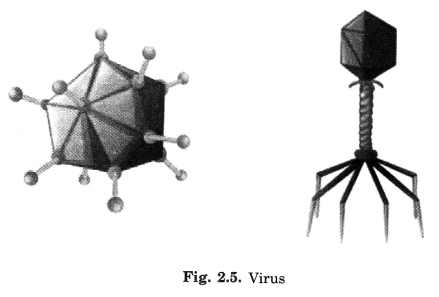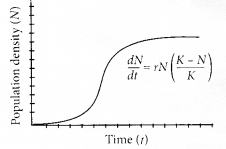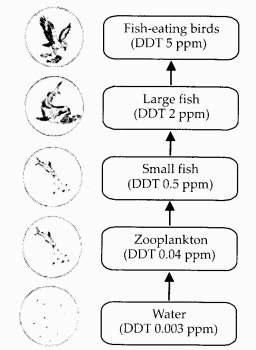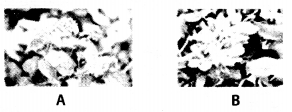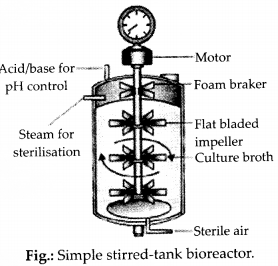NCERT Solutions for Class 8 Science Chapter 3 Synthetic Fibres and Plastics are part of NCERT Solutions for Class 8 Science. Here we have given NCERT Solutions for Class 8 Science Chapter 3 Synthetic Fibres and Plastics.
| Board | CBSE |
| Textbook | NCERT |
| Class | Class 8 |
| Subject | Science |
| Chapter | Chapter 3 |
| Chapter Name | Synthetic Fibres and Plastics |
| Number of Questions Solved | 15 |
| Category | NCERT Solutions |
NCERT Solutions for Class 8 Science Chapter 3 Synthetic Fibres and Plastics
NCERT TEXTBOOK EXERCISES
Question 1.
Explain why some fibres are called synthetic.
Answer.
Since man-made fibres are synthesised from petrochemicals, they are called synthetic fibres.
Question 2.
Mark the correct answer.
Rayon is different from synthetic fibres because
(a) it has a silk-like appearance
(b) it is obtained from wood pulp
(c) its fibres can also be woven like those of natural fibres
Answer.
(b) It is obtained from wood pulp.
Question 3.
Fill in the blanks with appropriate words:
- Synthetic fibres are also called…………. or……………fibres.
- Synthetic fibres are synthesised from raw material called………..
- Like synthetic fibres, plastic is also a …………..
Answer.
- artificial, man-made.
- petrochemicals.
- polymer.
Question 4.
Give examples which indicate that nylon fibres are very strong.
Answer.
They are used to make parachutes, and ropes for rock climbing.
Question 5.
Explain why plastic containers are favoured for storing food.
Answer.
Three main advantages of using plastic containers for storing food are:
- They do not react with food items.
- They do not get rusted.
- They are light, strong and durable.
Question 6.
Explain the difference between thermoplastic and thermosetting plastics.
Answer.
Thermoplastics can be softened on heating and can be bent easily whereas thermosetting plastics cannot be softened on heating and breaks when forced to bend.
Question 7.
Explain why the following are made of thermosetting plastics.
(1) Saucepan handles
(2) Electric plugs Iswitches /plugboards.
Answer.
The above articles are made up of bakelite (a thermosetting plastic) because it is—
- the bad conductor of heat.
- poor conductor of electricity.
Question 8.
Categorise the materials of the following products into ‘can be recycled’ and ‘cannot be recycled’:
Telephone instruments, plastic toys, cooker handles, carry bags, ballpoint pens, plastic bowls, plastic covering on electrical wires, plastic chairs, electrical switches.
Answer.
| Can be recycled | Cannot be recycled |
| Toys carry bags, plastic bowls, electric wire covering, plastic chairs. | Telephone instruments, cooker handles, ballpoint pens, electrical switches. |
Question 9.
Rana wants to buy shirts for summer. Should he buy cotton shirts or shirts made from synthetic material? Advise Rana, giving your reason.
Answer.
I would advise Rana to buy cotton shirts as cotton shirts absorb the sweat and thus endorse cooling. Besides, they also provide aeration.
Question 10.
Give examples to show that plastics are noncorrosive in nature.
Answer.
- It does not react with the chemical or other items stored in the containers made of it.
- It does not get rusted when exposed to moisture and air.
- It does not decompose when left in open for a long period.
Question 11.
Should the handle and bristles of a toothbrush be made of the same material? Explain your answer.
Answer.
The handles and bristles of a toothbrush should be made of a material which has lightweight good strength and is hygiene. “But the bristles should be soft enough so that ” they do not harm gums while the handle should be quite stiff so that it may not get bent while brushing.
Question 12.
‘Avoid plastics as far as possible.’ Comment on this advice.
Answer.
Since plastic takes several years to decompose, it is not environment friendly. It causes environmental pollution. Besides, when the synthetic material is burnt it takes a long time to get completely burnt. In the process, it releases a lot of poisonous fumes into the atmosphere causing air pollution.
Question 13.
Match the terms of Column A correctly with the phrases given in Column B.
| Column A | Column B |
| (i) Polyester | (a) Prepared by using wood pulp |
| (ii) Teflon | (b) Used for making parachutes and stockings |
| (iii) Rayon | (c) Used to make non-stick cookwares |
| (iv) Nylon | (d) Fabrics do not wrinkle easily |
Answer.
| Column A | Column B |
| (i) Polyester | (d) Fabrics do not wrinkle easily |
| (ii) Teflon | (c) Used to make non-stick cookwares |
| (iii) Rayon | (a) Prepared by using wood pulp |
| (iv) Nylon | (b) Used for making parachutes and stockings |
Question 14.
‘Manufacturing synthetic fibres are actually helping conservation of forests. ’ Comment.
Answer.
The synthetic fibres are made up of petrochemicals. So, manufacturing synthetic fibres does not depend upon plants. These synthetic fibres cater to the need of people up to great extent. Thus, the forests are not destroyed to manufacture clothes and other items. So, indirectly, we can come to the conclusion that manufacturing synthetic fibres is actually helping the conservation of forests.
Question 15.
Describe an activity to show that thermoplastic is a poor conductor of electricity.
Answer.
A thermoplastic (or plastic) is a poor conductor of electricity as shown in Fig. 3.3.
If we place a piece of copper in the gap touching points A and B (in Fig. 3.3), we observe that bulb glow. If we place plastic in the gap between A and B, we observe that the bulb will not glow. It means plastic is a poor conductor.

We hope the NCERT Solutions for Class 8 Science Chapter 3 Synthetic Fibres and Plastics help you. If you have any query regarding NCERT Solutions for Class 8 Science Chapter 3 Synthetic Fibres and Plastics, drop a comment below and we will get back to you at the earliest



